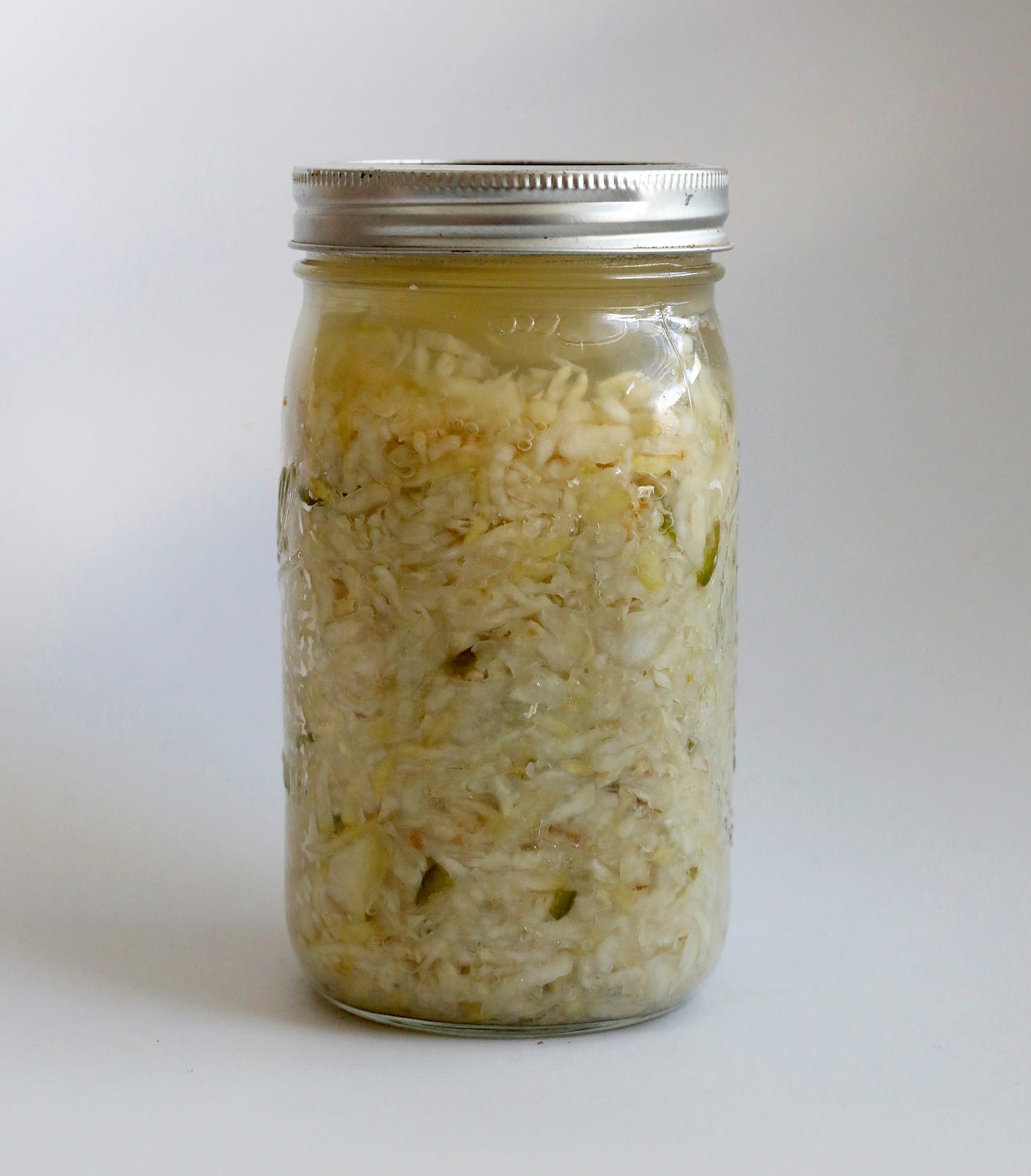This time of year always feels a bit like playing defense as far as the garden is concerned. There’s just so much coming in, on so many fronts, that each day involves some vegetable triage: what absolutely must get made or preserved today, and what can wait until tomorrow or a few days hence? One of the strategies I’ve developed to manage the glut involves making compound krauts like this one, using the grater wheel in my food processor to quickly turn a huge basket of produce into a manageable quantity of pickles.
This method is super-friendly to combinations of vegetables, especially roots and firmer parts of other plants, like kohlrabi (which featured prominently in the jar shown up top, along with turnips, onion, and serrano pepper). So whether you’ve got a lot or a little, you can play with mixtures and develop your own repertoire of custom krauts. Grating produces an even, homogenous slaw that packs most efficiently into jars, with no wasted space occupied only by brine—you can fit a lot of food into a relatively small volume. Shredding vegetables also creates a lot of surface area, so they release a lot of liquid quickly when salted and they ferment to a perfect crunchy-tender texture notably faster than big chunks.
The method couldn’t be simpler: use a box grater or food processor to shred your veg. Add whatever herbs and spices you like, which can be whole, chopped, or ground according to your preference. Then put everything in a bowl (tare the bowl on your scale first), add 2% salt by weight, knead everything together until it starts to get juicy, and then pack it into a jar and push in a weight. Leave the lid a little loose to let gases escape. Ferment it somewhere cool for a week, at which point it should be getting pretty tasty. Once it tastes great, remove the weight and put the jar in the fridge.
A note on this particular ferment:
Kohlrabi is an underrated vegetable. It’s cabbage, but cabbage that has been bred to grow a big, bulbous stalk and little in the way of leaves. It’s got a nice mild flavor that takes well to vinaigrettes (and pickling, obviously), and has a terrific crunch. Mixing it with turnips turned out to be a great call, because they’re also in the mustard family but with a pronounced horseradishy edge that makes this pickle nicely focused. The chiles add a different kind of heat, and the whole thing sings. Try this one yourselves, or invent your own special blend based on what you’re growing or buying.


